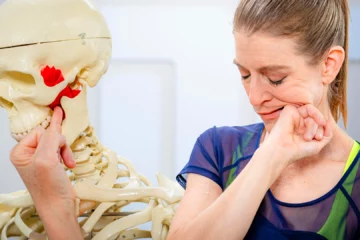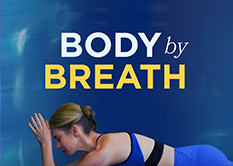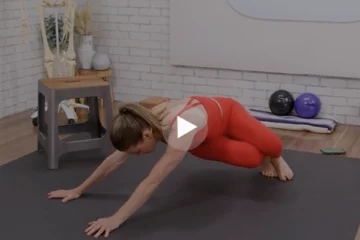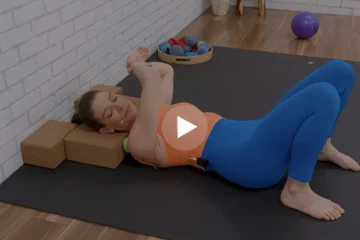
A couple of months ago I picked up yoga scholar Mark Singleton’s new book,Yoga Body: The Origins of Modern Posture Practice. The book details the modern history of asana with Singleton painstakingly chronicling how yoga’s physical postures are not actually drawn from antiquity but rather beginning at the dawn of the 20th century.
Without going into too much detail, he outlines how these “poses” were derived during an environment of Indian neo-nationalism and infused with doses of European gymnastics, bodybuilding and the Christian agendas of the YMCA. Basically, what his research concludes is that the 5,000-year-old practice we all believed to be the origin of asana got its start less than 200 years ago, and that the foundation of asana was created by gymnasts and bodybuilders and as physical training for some militia.

Yikes! Have four years of research upended a global myth? Now yogis and yoginis around the world are facing the possible unraveling of the ultimate bait and switch — are the yoga postures so many of us have practiced for years not actually the ancient, sacred forms that many of us believed they were? Well, his research is rather compelling and I recommend you give it a read.
Change of any sort can be hard to absorb and accept, and this new perspective forces us to take a collective look at the beliefs and meaning behind our own practice. Yoga postures can inspire faith and well-being in the many who practice them, and losing the connection to the story of the tradition can be a difficult psychological loss.
Shaking the foundation
As a yoga student for 27 years, and a yoga teacher for the past 18, I had been operating under the assumption that I was indeed practicing an ancientmeditative tradition. But all along, something did not feel quite right to me about that “assumption.” Sixteen years ago, I remember showing poses to my boyfriend, a gifted martial artist, and he would often comment that the poses were just a small gesture away from being some of the same moves he did in sparring, fighting, etc. I wondered back then if the yoga poses I practiced were not really about becoming calm, peaceful and “at one” with the universe. Might the Warrior Pose actually have been a pose to train real warriors and fighters?
“It should also be noted that militant yogins of all lineages engaged in exercise regimes designed to inure their bodies to the harsh physical conditions of the itinerant life and to prepare them for combat.” p. 40, Yoga Body
This may be heretical to say, but for a while now I’ve been feeling that most “classical” asana were profoundly out of touch with the needs of my all-ages contemporary students who sit facing computers all day, drive in cars and do not fully use their bodies for their livelihood. Did classic postures truly speak to their needs, their bodies, and to the stresses that faced them?
A break from tradition: The yoga police
My own inner conflict peaked about 10 years ago when I could no longer justify teaching a set sequence of postures. These postures were supposed to be healing my students, but I could see that they were in denial of certain injuries it was causing as they kept pushing themselves in order to keep “doing yoga.” The gymnastic-like flows were putting them in a perpetual state of dysfunction, so I completely broke from the “traditions” I was taught and began to work with my students in new therapeutic ways using biomechanically sound variations that would help their bodies, rather than hurt.
Even though I knew I was doing right by my students and helping those who had been sidelined by the practice they loved, I was also constantly looking over my shoulder for the “yoga police.” Of course there is no “yoga police,” but I could hear murmurs every now and again that what I was teaching was not “authentic yoga.”
A new definition of “authentic yoga”
Singleton’s research has me contemplating, “What is authentic yoga?” He provokes the even more powerful question: “Why do we do yoga, and what is its purpose in our lives?” What I’ve come up with is that the practice, regardless of its origins, illuminates authentic parts of ourselves and our nature so that we can know ourselves better, both physically and mentally, and ultimately, feel better in our body, mind and spirit.
One of the precepts of yoga is aparigraha, or non-attachment. Yoga encourages us to not be so attached to physical or mental constructs of ourselves. What Singleton has now unearthed is the possibility of letting go of the historical construct of yoga postures. This construct was once a long mirror illuminating a tradition tracking back through the millennia. But now that mirror has hurtled forward towards modern times and we must look into its reflection and be open to letting go of an “idea” of the genesis of the practice. We must be willing to even let go of yoga in order to find the truth behind our own practice.
Singleton offers further food for thought in this excellent interview with Susan Maier-Moul in The Magazine of Yoga. He also pens an article in the November 2010 issue of Yoga Journal.
Learn about Yoga Tune Up at home.
Find your nearest Yoga Tune Up® Class
Learn about Yoga Tune Up® Teacher Training.
[Article reprinted with permission from Gaiam Life.]













I received my yoga training from YogaFit, which was developed by Beth Shaw to incorporate yoga into gym settings. It’s not a classical practice but one based on science and conforming to the needs of today’s society. That is probably why I was drawn to your methods and teachings. I just took the Yoga Tune Up training and I loved it! I incorporate so many of your Yoga Tune Up poses into my classes and I feel that I’m being more helpful rather than hurtful.
“…the practice, regardless of its origins, illuminates authentic parts of ourselves and our nature so that we can know ourselves better…” This particular line struck every harmonious cord with in me. What can we learn from the teachings if we do not listen to asana in the body we live in. Namaste
My brother recommended I may like this blog. He was once entirely right. This post truly made my day. You cann’t believe just how a lot time I had spent for this info! Thank you!
I believe that our practice of Yoga is about keeping our bodies in balace trough correct movement paterns, healthy food, healthy brain food, and our breathing practices so that we then can sit in our meditation with out any distractions from the body,and also be of service, so we need to be really smart about what type of postures will create this balance and is not a one fits all situation. thank you Jill for sharing this.!!
This post definitely flared up some of my chitta vrittis — at first I want to grasp on to the attachment to the idea of the ancient asana practice. But as I take the time for reflection, it is common sense to realize all people of all shapes and sizes should be able to do yoga — safely and to gain health of body and spirit. By spending time studying the Yoga Sutras, you realize that actual asana practice is only mentioned a few times out of almost 200 sutras. Yoga is an ancient philosophy. The asana practice is a small piece of the whole yogic lifestyle. Cultivating a safe and healthy practice for our modern, western students is putting true yoga philsophy into action.
I haven’t read the book, however, nothing really surprises me. Rather true or not, I actually like the concept of yoga postures not being ancient. Although earth shattering for some, I feel like it really helps you stay in the present, there is no past and no future.
It’s not always about the story or the history of something, As students of our bodies, we are learning and exploring the likes and dislikes of our bodies. We are working to find out our own truths for our personal journey. So if yoga or running or dancing or whatever feels right to you, that’s the story or the history you will leave behind as you work towards your truth on your journey in life.
I have not read the book yet, so cannot comment on the content. But will say that the idea put forth is very interesting and of course, controversial. There is another book out called “The Great Oom”, also an interesting but not always positive portrait of Pierre Bernard and his import of Yoga to the west. I think the question Jill presents at the end of her blog is pointed and should be considered seriously. The bigger part of the practice is on the inside, the work on the body leads us there. Can Yogi’s practice what they preach?
Like many of my peers, Mark’s book rocked me at first. I think Jill’s response is tremendously valid, especially given the value of the work she’s doing. I also look at it from another perspective- India has sat at the middle of a trade route for much of recorded history, both being influenced by and influencing the people and cultures it interacted with for literally a thousand years. So on many ways “Indian tradition” is no more or less an amalgam as any other culture. Furthermore, the tradition is dynamic, not static- I’m sure even the most “traditional” yoga in any form has morphed in India over the last hundred years. I say bring it.
This was an excellent blog. I am planning on attending the Mark Singleton talk at YogaWorks on March 18th. Susan Maier-Moul did an informative interview in The Magazine of Yoga. I was under the impression that asanas were old like badakonasana was from the cobbler in his work and the cobbler had supple hips hence the pose developed. The asanas are only 1/8 of yoga. Pranayama is only another 1/8 of yoga. The bulk of what yoga is (3/4) is not incorporated in modern yoga classes anyway. I mention yama and niyama principles monthly in my classes as a brief lecture while students hold a pose that is not too taxing but that’s about it. That still is only half of what yoga is. I mainly teach asana and pranayama and that is what people expect. If the asanas are not ancient, well that is interesting, but does not matter. Asanas are effective in allowing me to explore my inner realm.
Whether or not yoga is following the general lineage of where it was when it first originated, as a Western practice, it is always going to deviate, to an extent from the original. When dealing with a 6″3 male in our society, adaptations are going to have to be made in order to come close to the practice that was first practiced by people not significantly more than 5 foot. I think that this is a great article that highlights why in fact people return to a variation of the ancient practice – because it feels good. It is a personal practice, whether in a classroom or at home, that makes YOU feel good. THAT is yoga. Not being able to do the exact same pose that was once attained by a super bendy 4″8 Indian man is not failing at yoga, Sure, it’s great to have a destination to head towards, but it’s not the destination that counts – it’s the journey. So, if it doesn’t feel good to walk the thorny path that doubles you over in pain, take a different route, and practice filling your own highest good.
Jill, the modern Indian developers of yoga systems all emphasized worship and breath as central to the practice. Particular asanas & vinyasas had Indian & Hindu cultural origins related to vedanta & the Gita with an underlying theme of devotion. It’s this that most of the current gym -oriented US yoga classes & teachers have already rejected as they teach the forms as a purely athletic(including all the psychological/centering/aesthetic benefits of athleticism)art with rules, parameters and levels of achievement , just like show jumping, figure skating, or any sport which all have meaning and beauty for the individual as well as offer participation in a community of people interested in the techniques and gear.
IME, individualization and adaptation to suit the physical abilities, disabilities, and challenges of the individual through her lifespan is integral to all the yoga traditions that follow the Indian popularizers. It’s flow classes led like aerobics classes that assume the student will take responsibility for knowing where to push & when to back off & which don’t individualize or provide students with the tools/feedback to know that the one size fits all instructions & concentrations are geared exactly to people who drove to class, have tight hamstrings, & other generalizations and may not be necessary or helpful to the loosey goosey walker in the class. To me the key is class size , teacher observation, & helping the student know what their body needs, not just what feels good at the moment.
This blog gives me mixed feelings. I suppose it’s not how old the yoga philosophy has been passed down, but the fact that it’s a pure beautiful philosphy that people in the present day follow.